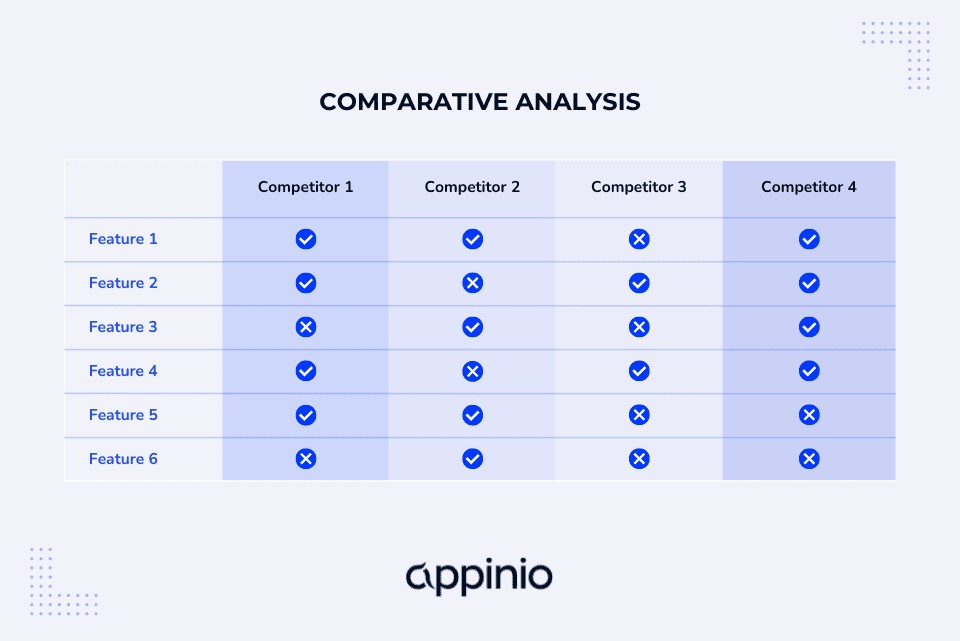Comparative research is a powerful tool for understanding the similarities and differences between phenomena, informing decision-making, and driving innovation across various fields. This guide provides a comprehensive overview of how to conduct a comparative research study, from defining objectives to interpreting results.
Defining Objectives and Scope
Before embarking on a comparative research study, clearly define your research question and the scope of your investigation. What are you trying to compare, and why? What are your specific research goals? A well-defined research question and scope will guide your entire study. For example, you might want to compare the effectiveness of two different teaching methods or analyze the marketing strategies of competing companies.
Gathering and Organizing Data
The success of your comparative research hinges on the quality and organization of your data.
Data Sources
Identify relevant primary and secondary data sources. Primary data involves collecting original data through surveys, interviews, experiments, and observations. Secondary data utilizes existing information from published reports, academic journals, and online databases.
Data Validation and Quality
Ensure data quality by validating information from multiple sources, checking for data integrity issues, and assessing the reliability of your sources. A statistically significant sample size is crucial for meaningful analysis.
Data Organization
Organize your data effectively by cleaning, normalizing, and labeling variables. Structure your data in a format suitable for your chosen analysis methods, such as a matrix for quantitative analysis or thematic categorization for qualitative analysis.
Choosing a Comparative Analysis Methodology
Select a methodology that aligns with your research objectives and data type.
Qualitative Comparative Analysis (QCA)
QCA examines complex relationships between variables using Boolean logic and set theory to identify necessary and sufficient conditions for specific outcomes.
Quantitative Comparative Analysis
This method uses numerical data and statistical techniques to compare variables and establish relationships. Common applications include regression analysis, t-tests, and ANOVA.
Case Studies
Comparative case studies involve in-depth examination of specific instances to identify patterns, differences, and lessons learned.
SWOT Analysis
This framework assesses internal strengths and weaknesses and external opportunities and threats to inform strategic decision-making.
Benchmarking
Benchmarking compares an entity’s performance against industry leaders or best-in-class organizations to identify performance gaps and drive improvement.
 What Is Comparative Analysis and How to Conduct It Examples
What Is Comparative Analysis and How to Conduct It Examples
Conducting the Comparative Analysis
Identifying Key Variables and Metrics
Select the variables and metrics that are most relevant to your research question and objectives. Determine whether your analysis will be primarily quantitative, qualitative, or a mixed-methods approach.
Data Visualization
Use charts, graphs, heatmaps, and dashboards to visualize your data and reveal patterns, trends, and outliers. Effective visualization enhances understanding and communication of findings.
Establishing Comparative Frameworks
Utilize comparison matrices, decision trees, scenario analysis, and checklists to structure your analysis and ensure consistent comparisons.
Evaluating and Scoring Criteria
Define a clear scoring system to evaluate each option against your chosen criteria. Ensure consistency in scoring and consider weighting criteria based on their relative importance.
Interpreting and Applying Results
Contextual Understanding
Interpret your findings within the broader context of your research area. Consider external factors that might influence your results.
Drawing Conclusions and Actionable Insights
Summarize your findings, identify key trends and differences, and formulate actionable insights. Discuss the implications of your research for decision-making and future research.
Applications of Comparative Analysis
Comparative analysis finds applications across diverse fields, including:
- Business: Market research, competitive analysis, product comparison, financial analysis
- Healthcare: Clinical trials, health outcomes research, healthcare systems evaluation
- Social Sciences: Educational research, political science, social welfare analysis
- Environmental Science: Environmental impact assessment, climate change analysis
- Technology: Product development, user experience testing, technology adoption
Best Practices for Comparative Research
- Define clear objectives.
- Ensure data quality.
- Employ transparent methodologies.
- Maintain consistent criteria.
- Conduct sensitivity analysis.
- Involve stakeholders.
- Critically evaluate assumptions.
- Maintain thorough documentation.
- Engage in continuous learning.
- Seek peer review.
- Adhere to ethical considerations.
Conclusion
Comparative research provides a structured framework for understanding complex phenomena and making informed decisions. By following the steps outlined in this guide and adhering to best practices, researchers can unlock valuable insights and contribute to knowledge advancement in their respective fields. Remember that comparative analysis is an iterative process; continuous refinement and adaptation are crucial for maximizing its effectiveness.